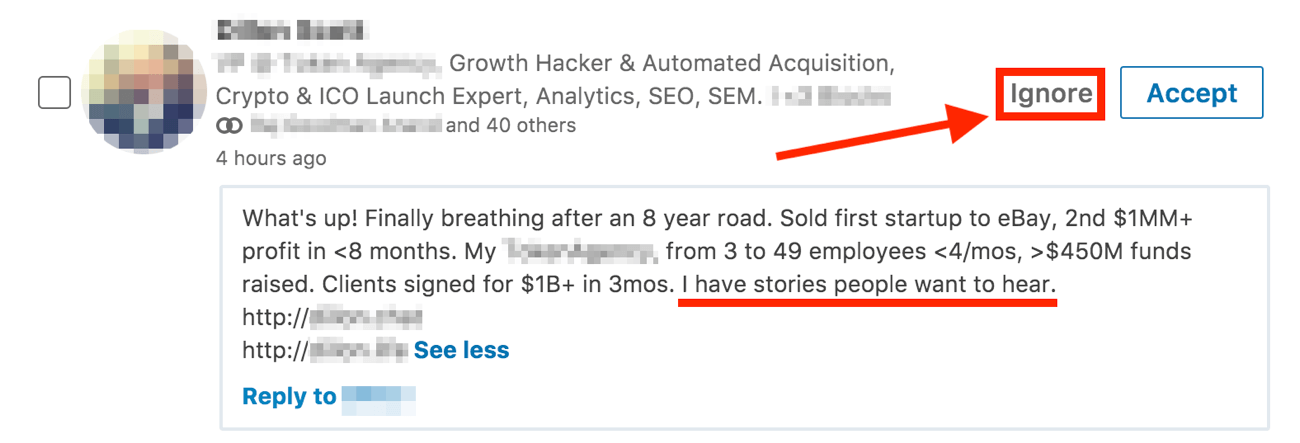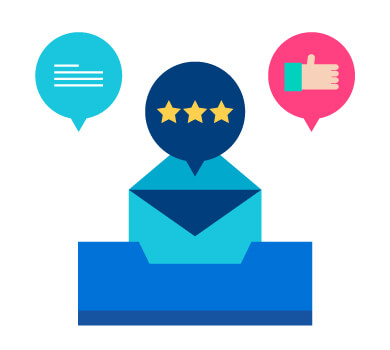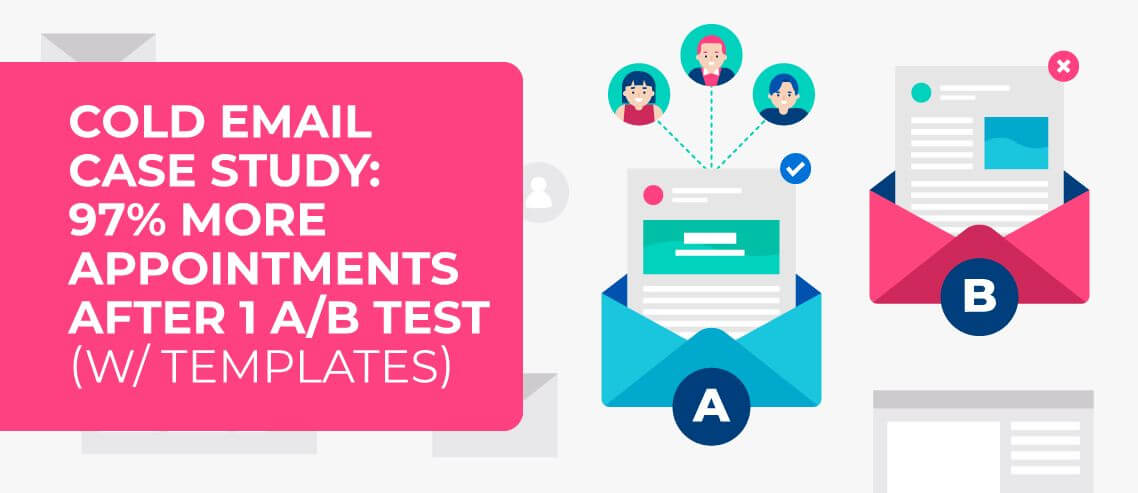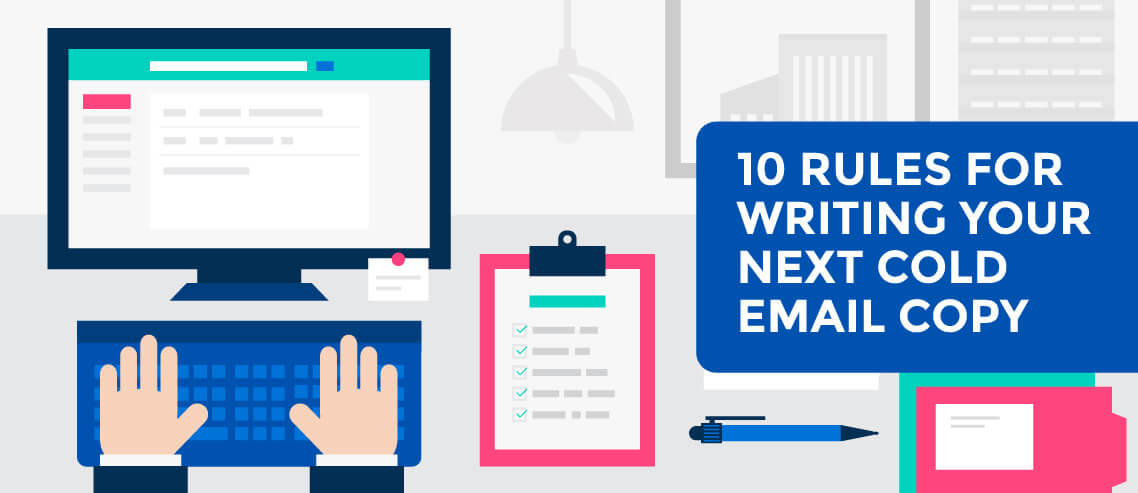5 Clever Hacks That’ll Increase Response Rates to Your Cold Email Campaigns

Contents
When you’re gearing up to launch a cold email campaign, it doesn’t matter whether your goal is to land a guest post, book a meeting with a prospect, or sell your product—one even more important objective stands tall above all else.
Actually getting a response to your cold emails.
If you send hundreds or even thousands of cold emails during your outreach campaign, and only ever hear back from a small number of prospects you’re reaching out to, I’d call that campaign a failure. No new guest posts secured. No meetings booked. No new sales.
Because chances are, if you’re investing in outbound email as a growth strategy for your business, your sales process probably involves a higher touch approach with your customers beyond just a fully self-serve offering.
If you need your recipients to take any action beyond simply clicking a link and making a snap purchasing decision, then the first (most important) goal of your campaign is to start a conversation that could lead to achieving your eventual goal of landing a guest post, booking a meeting, or making that sale.
As both a content marketer and business owner, I get dozens of cold emails from people every day, either pitching their product or asking for a feature in one of the publications I write for. The vast majority of those emails forever go unanswered, for a multitude of reasons.
Here are my top five non-intuitive hacks for boosting your cold email response rates.
1. Read Your Cold Email Out Loud (Before Sending)
Sounds simple, right?
Well, judging by most of the cold emails sitting in my inbox, I guarantee you most people never pause to actually read the content of what they’re sending. From spelling mistakes to grammatical errors, and even long-winded emails that have no clear purpose or request, many of your cold email woes can be solved simply by proofing your content through the act of reading it aloud.
Studies have shown that you probably have seven seconds (or less) to make a strong first impression from the moment your prospect opens your cold email, so it shouldn’t take you more than 30 seconds to read through your entire message.
If your initial outreach email does take longer to read, look for ways to trim that content down to something more manageable (and realistic) for a stranger to want to complete. As you read your email aloud, try and objectively answer these questions:
- Do the first seven seconds of my email capture the reader’s attention?
- Do I have any spelling or grammatical mistakes in my email?
- Is there a very clear (single) call-to-action for my recipient to take?
- Why should my recipient take that desired action? What’s their incentive?
While seemingly simple on the surface, this tactic can be particularly impactful if you’re an inside sales rep sending scores of personalized emails to prospects each day. When you’re cloning over templates, importing different data fields, or working with multiple lists and verticals, your probability of making mistakes compounds over time.
2. Record and Listen to Yourself Reading Back Your Email
While reading your emails aloud can be helpful, listening back to how it actually sounds, adds an extra layer of analysis.
Listening to your message will help you catch things like run-on sentences that leave you short of breath, as well as determine whether or not you’re lacking the right context, if you’re ending with a clear (simple) ask, and it affords you a better opportunity to evaluate the overall impact of your request.
Since time is of the essence with your cold emails, I recommend timing yourself while you record the reading of your message. Is it too long, too short, or right around that twenty to thirty-second mark?
Look for optimization opportunities in your emails by answering these questions:
- How convincing does your email sound? Does it sound personal or like a template?
- Does your email take too long to read?
- Does your email talk largely about yourself or your accomplishments (instead of what your recipient stands to gain)?
- Are you ending with just one concrete step for your recipient to take?
Remember, if your email sounds boring or unimportant when you listen back to the recording, it’ll probably sound just as interesting to the person on the receiving end.
Make it personal, show you know something about your recipient and their company, but keep it quick and to the point.
3. Ask a Coworker for Critical Feedback

You can’t trust yourself to write perfect outreach
emails 100% of the time.
Before launching a particularly important campaign, or hitting send on a cold email to major potential customers in your space, ask for some truly honest feedback from a coworker—it takes just two minutes and could really save your ass.
Take this cold LinkedIn message I received today as an example of one that would’ve undoubtedly been edited if the sender had asked for feedback from one of his coworkers or employees.

It’s hard to even find a place to begin when examining what’s wrong with this message.
For starters, the content is just a long incoherent rambling of apparent accomplishments without a clear ask from me. I can infer that he probably wants me to write about him for either my blog or on one of my publication columns, but instead of simply stating what he wants, he’s leaving me to do all the legwork on determining which action I should take next.
Not only is this message littered with grammatical errors, but there’s not even one complete sentence. To top it all off, he ends with the statement, “I have stories people want to hear,” and proceeds to link to two of his websites.
Clearly, not every recipient of your cold emails will be tearing them down and looking for every possible mistake like I’ve done for this example, but the point is that your cold emails are your first impressions and you only have one chance to form a strong presentation before your messages are likely to begin getting ignored.
For that exact reason at Close.io on our marketing team, I ask two teammates to proof every marketing email I write before we hit send.
Most of the time, the emails don’t need any major revisions, but every now and then they’ll catch a mistake I didn’t notice, or help me position something more effectively—and we all benefit from sending messages that translate into better results.
4. Use a Subject Line that Establishes Clear Relevance
Your cold email subject line will make or break the success of any outreach campaign.
Make them too long, and your recipient won’t want to read them (or even open your email). Too ambiguous and you run the risk of getting sent to the spam folder. Too personalized and you could sound like a robot just delivering a generic templated message.
The best subject lines aren’t necessarily overly creative, but they provoke interest in the mind of your recipient—enough to encourage them to open the email and continue reading. They’re informative, but don’t give too much of your request away.
Here are five subject lines I’ve had continued success with, in getting a large number of (generally positive) replies to my cold emails promoting Close.io blog content or for getting new partners on our webinar series like the one we did with Mailshake’s Sujan Patel:
- Your feature on our blog
- Interview for our 500k readers?
- Webinar roundtable invitation 🙂
- Quick question for our 500k readers?
- Want to speak at our summit?
You’ll notice a few things each of these subject lines all share in common.
They’re all relatively short (around 35 characters or less) which make them easy to quickly scan, and they clearly establish the context of the email without being unclear or trying to trick the recipient into opening the email.
Finally, these subject lines are designed to establish a sense of credibility with the recipient, and to show that we’re providing value by referencing our number of readers and offering a chance for the recipient to reach that audience.
5. Gather Feedback from Customers (and Prospects that Didn’t Convert)

Often, the best people to give you actionable feedback on your pitch, are the ones that either recently purchased from you as a result of that initial cold email—or those that decidedly didn’t.
The pool of recent customers that joined as a result of your cold email are always going to be much easier to solicit feedback from, because they’re invested in their relationship with you and your business. Send them a quick email asking what they thought about your initial email and if they have any suggestions on how it could be improved for the future.
Now, while the feedback from your new customers is easier to get, it often isn’t as impactful as what you can learn from the prospects that don’t take your desired call-to-action.
Did they even read your email? Did the tone of the message rub them the wrong way? Did you send follow up emails too frequently? Did you start a dialogue, only to have it fizzle out at some point?
It doesn’t take much of your time to send a short note asking for a little critical feedback on your email (or the overall experience interacting with you), and if you don’t ask, you’ll never know.





